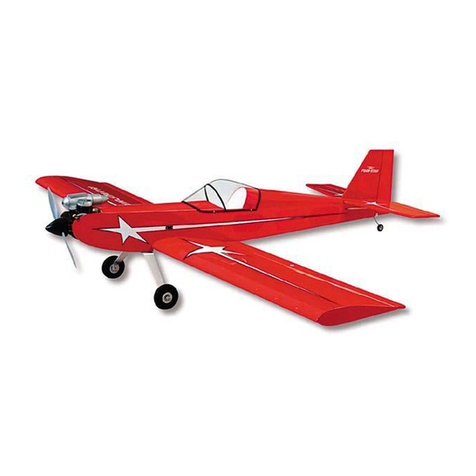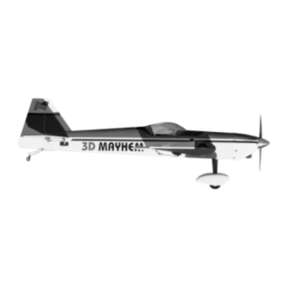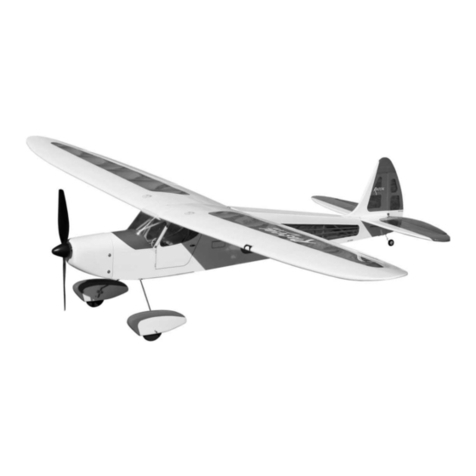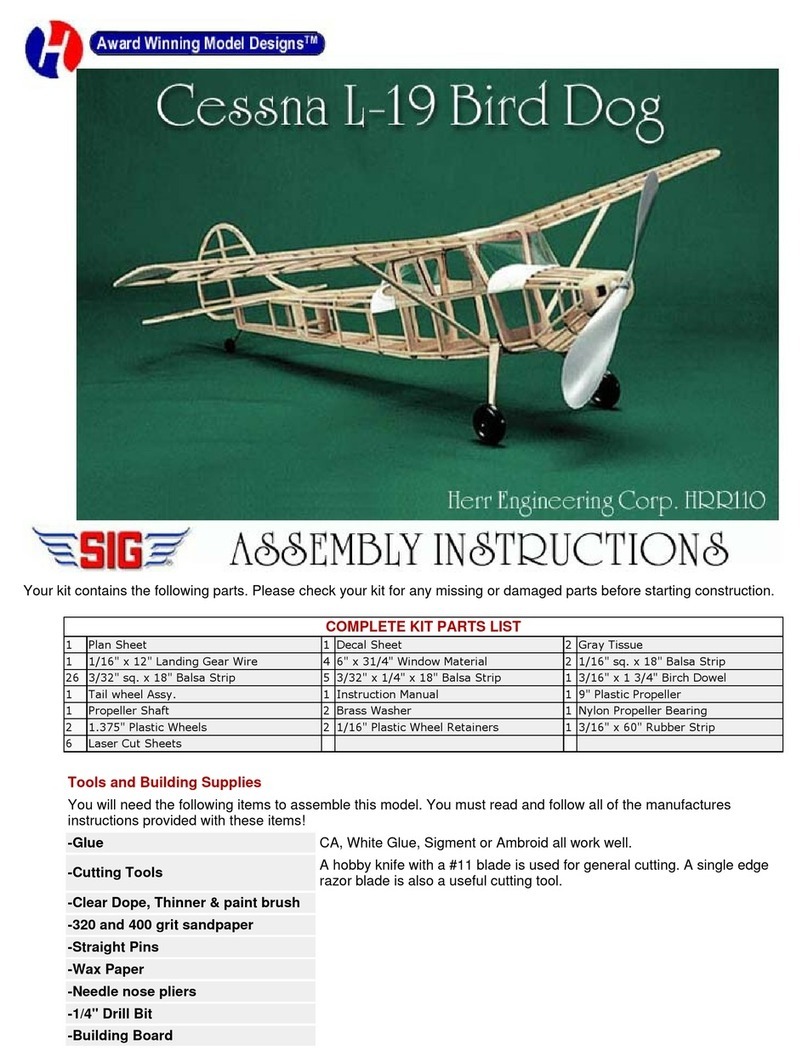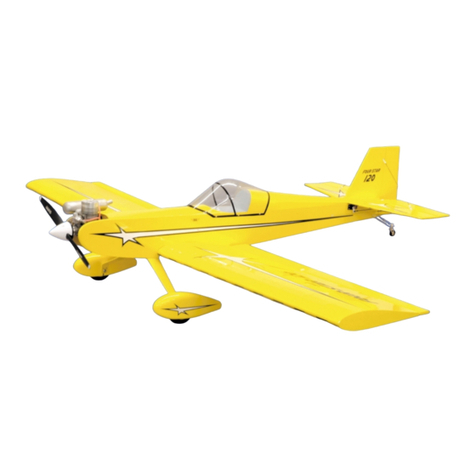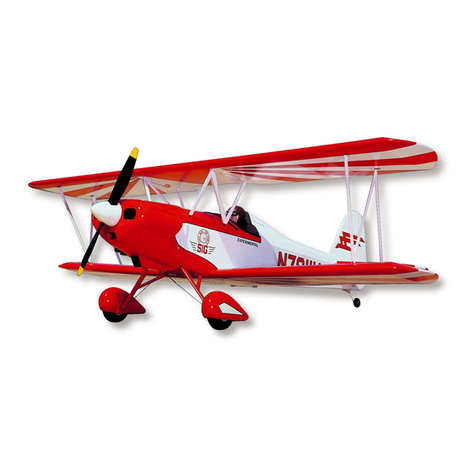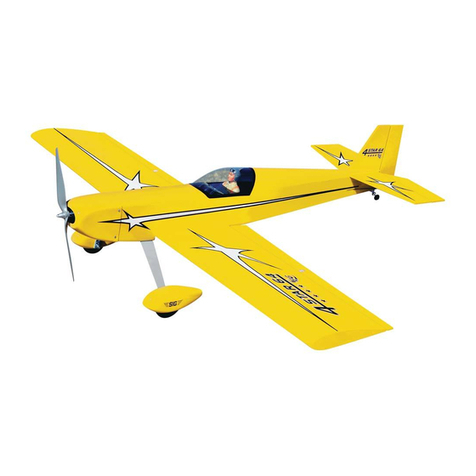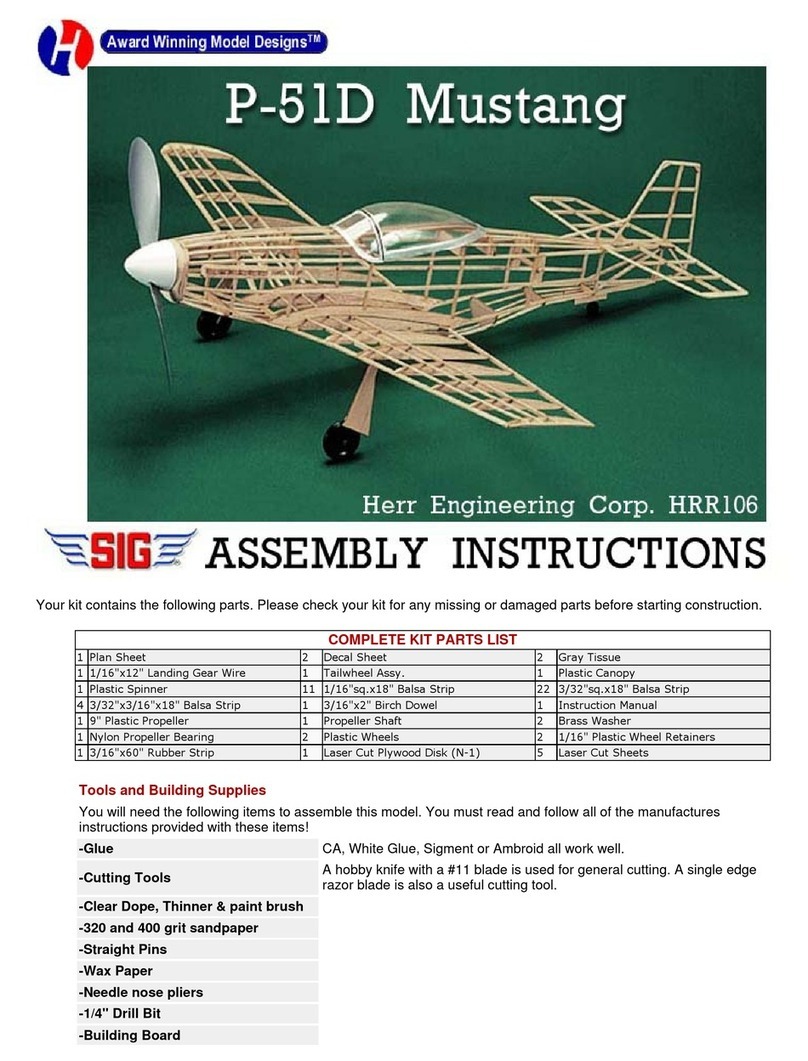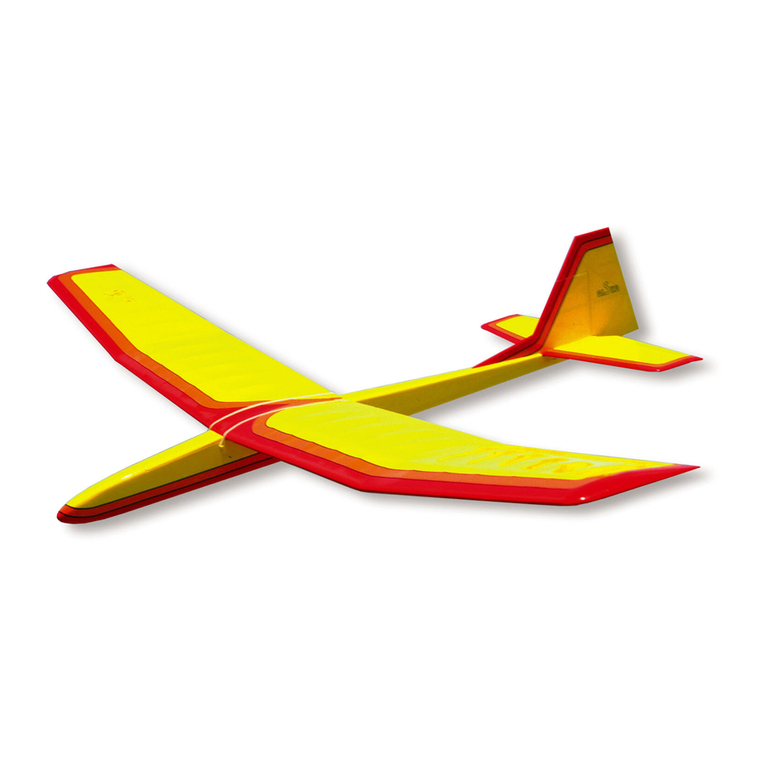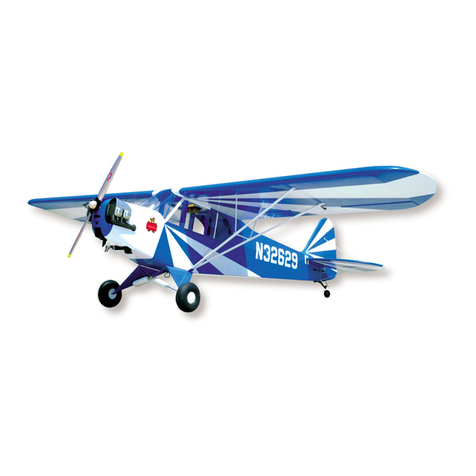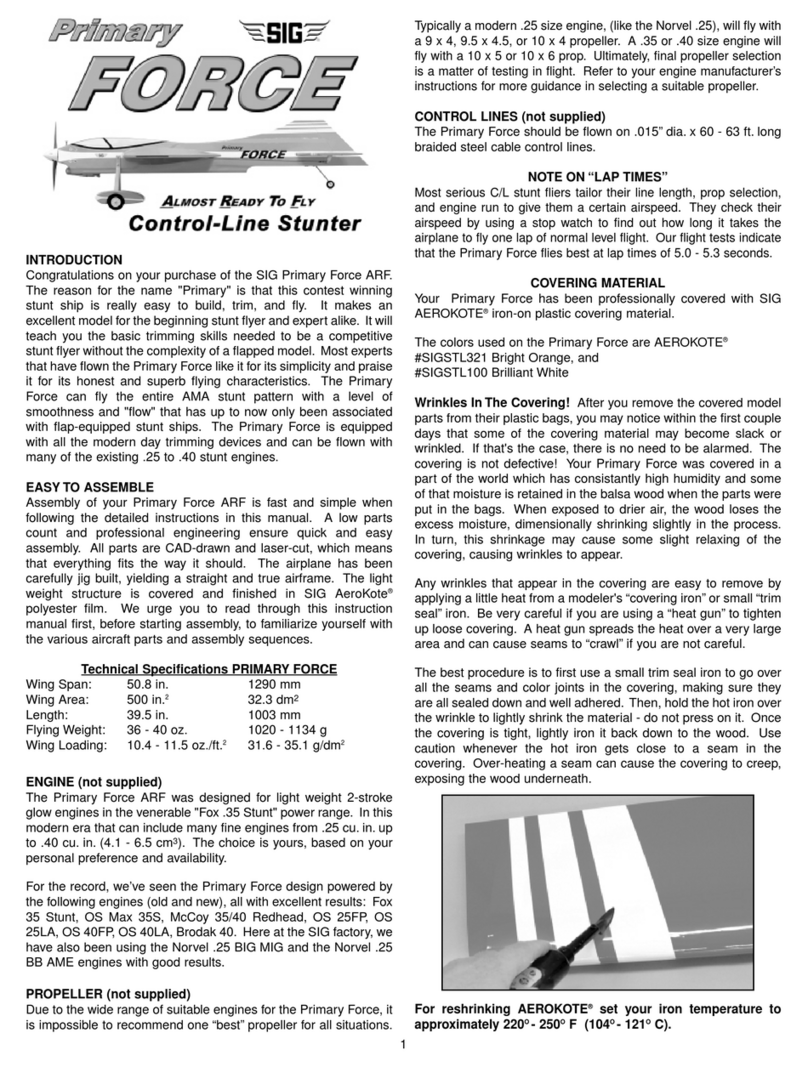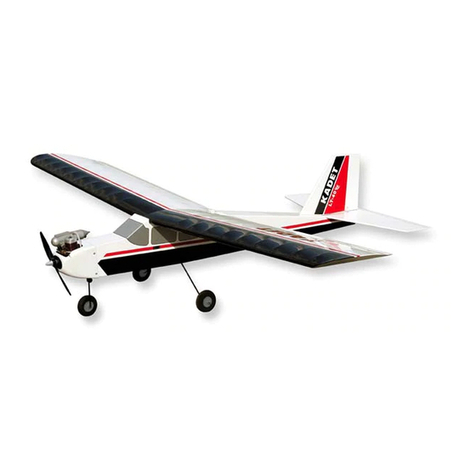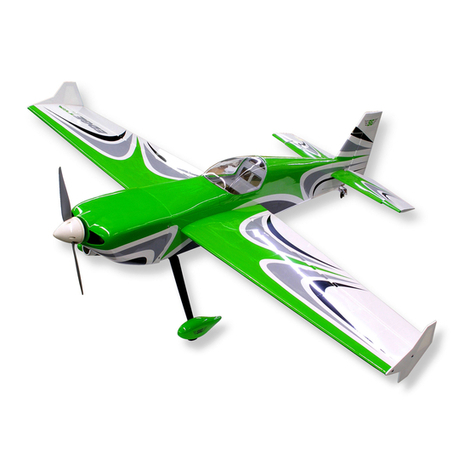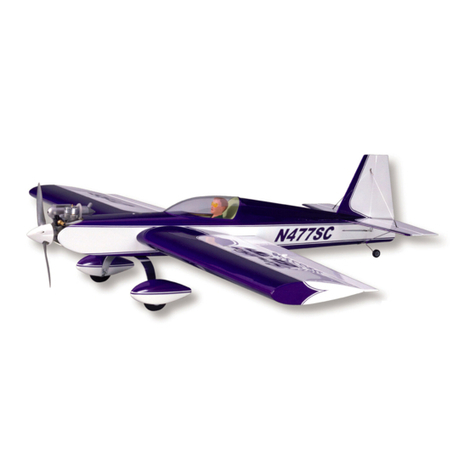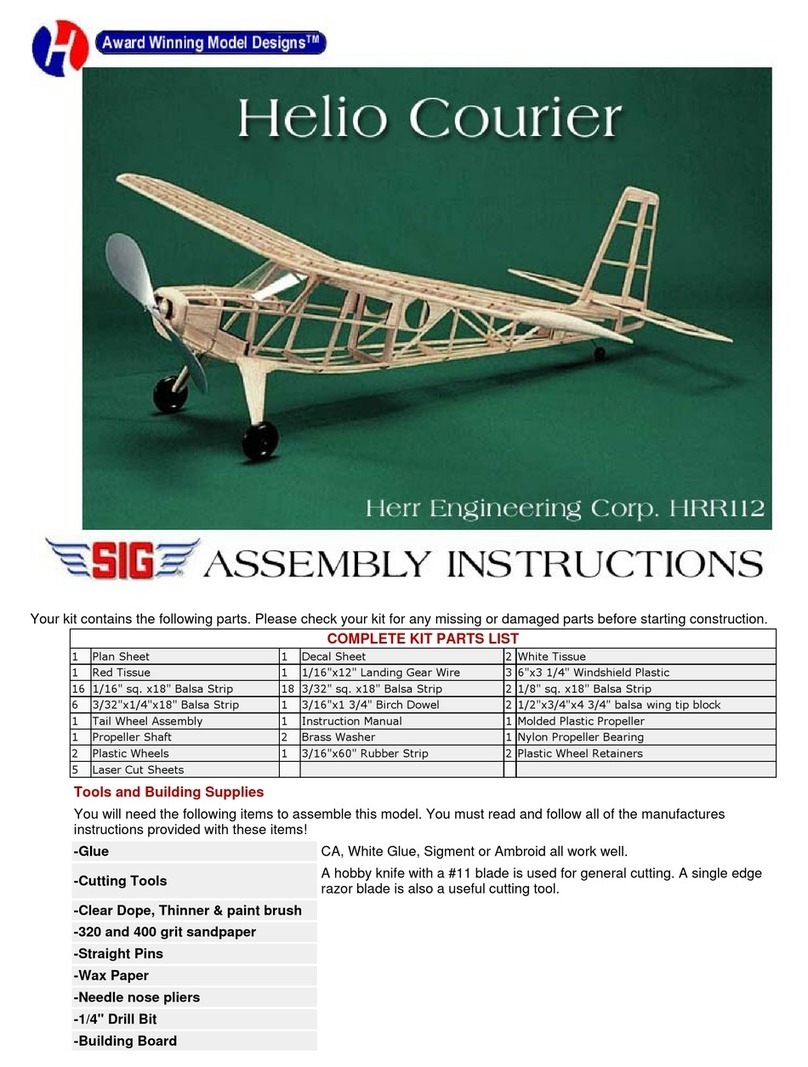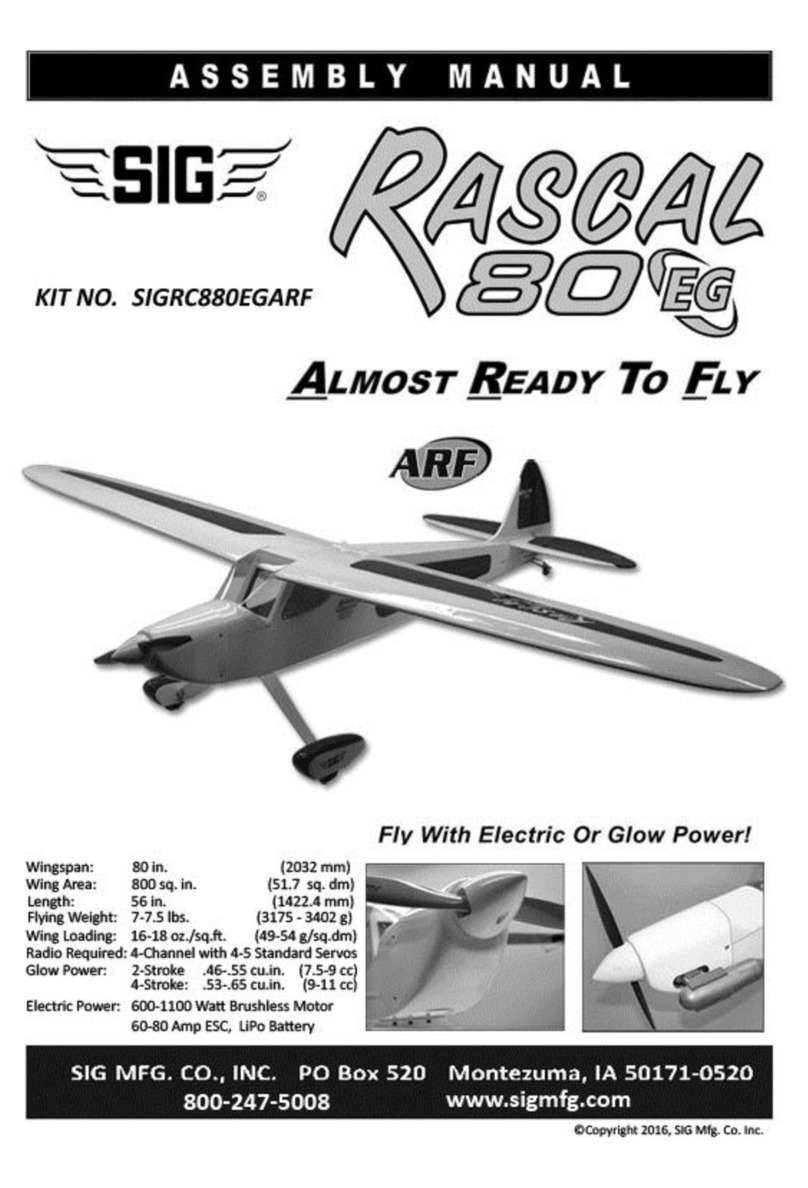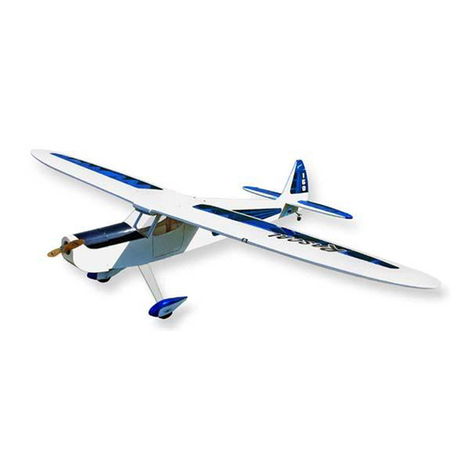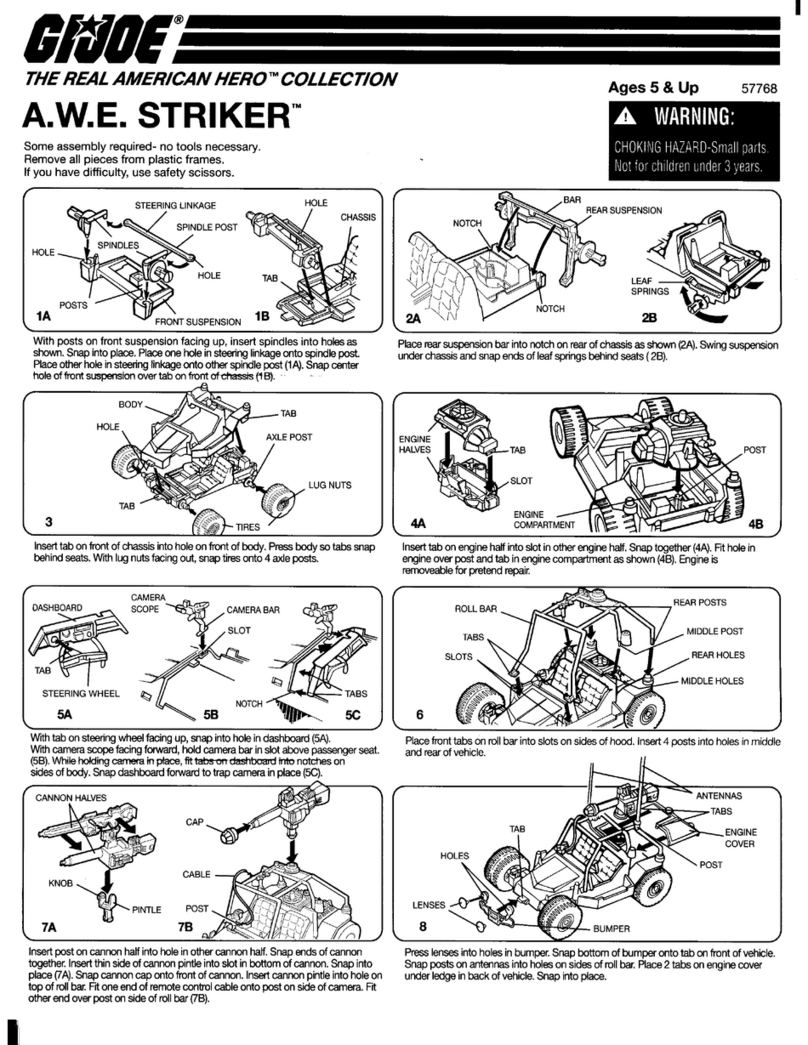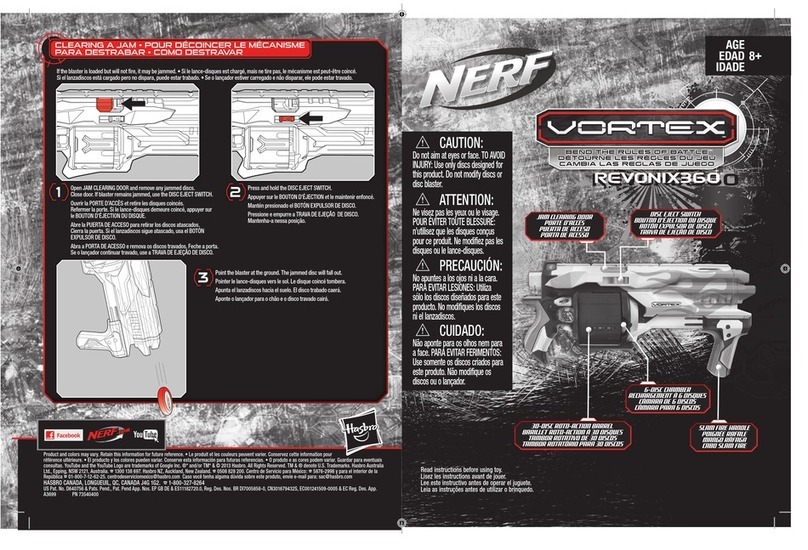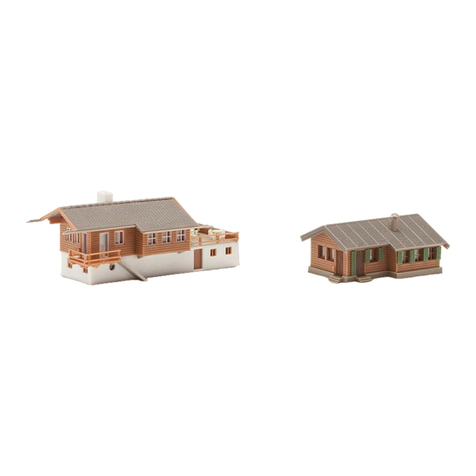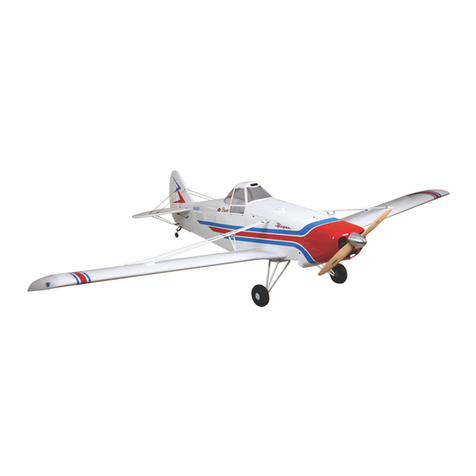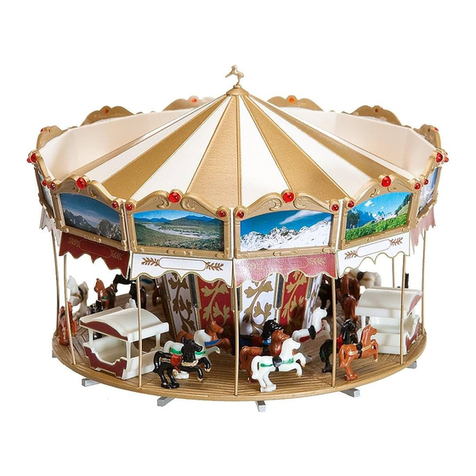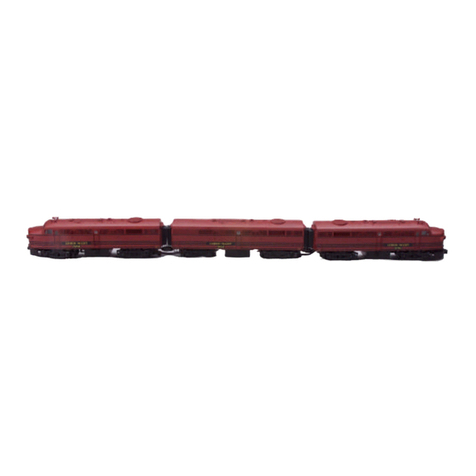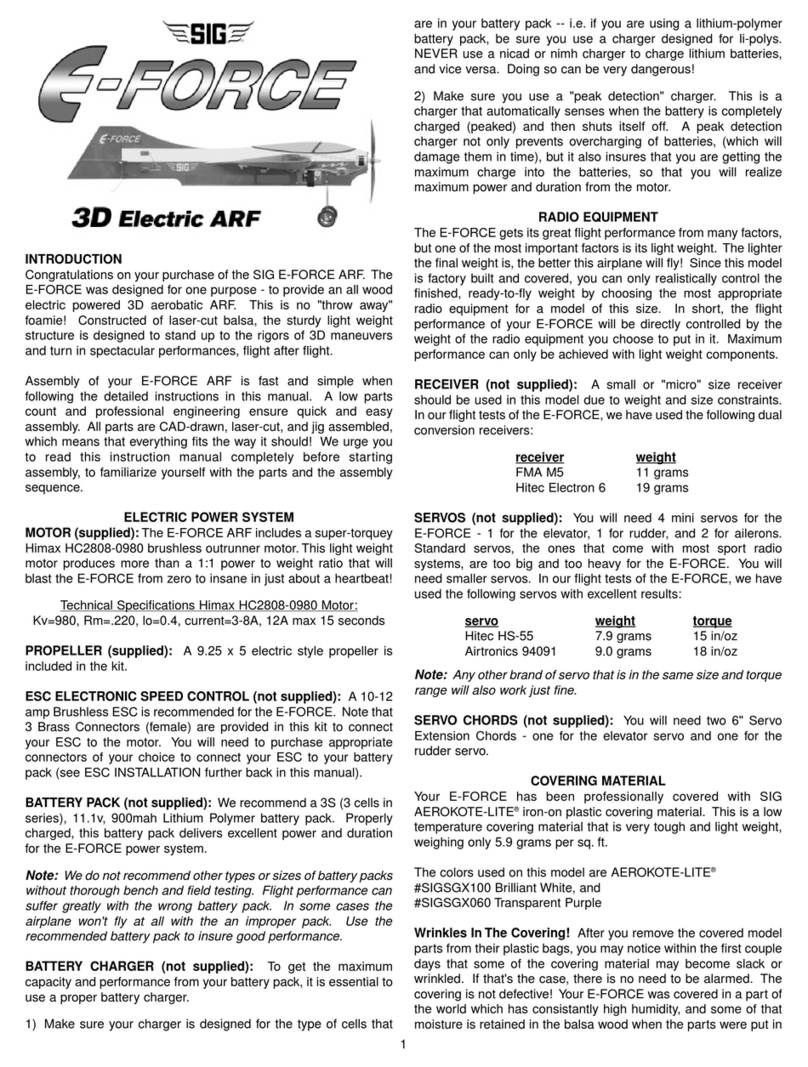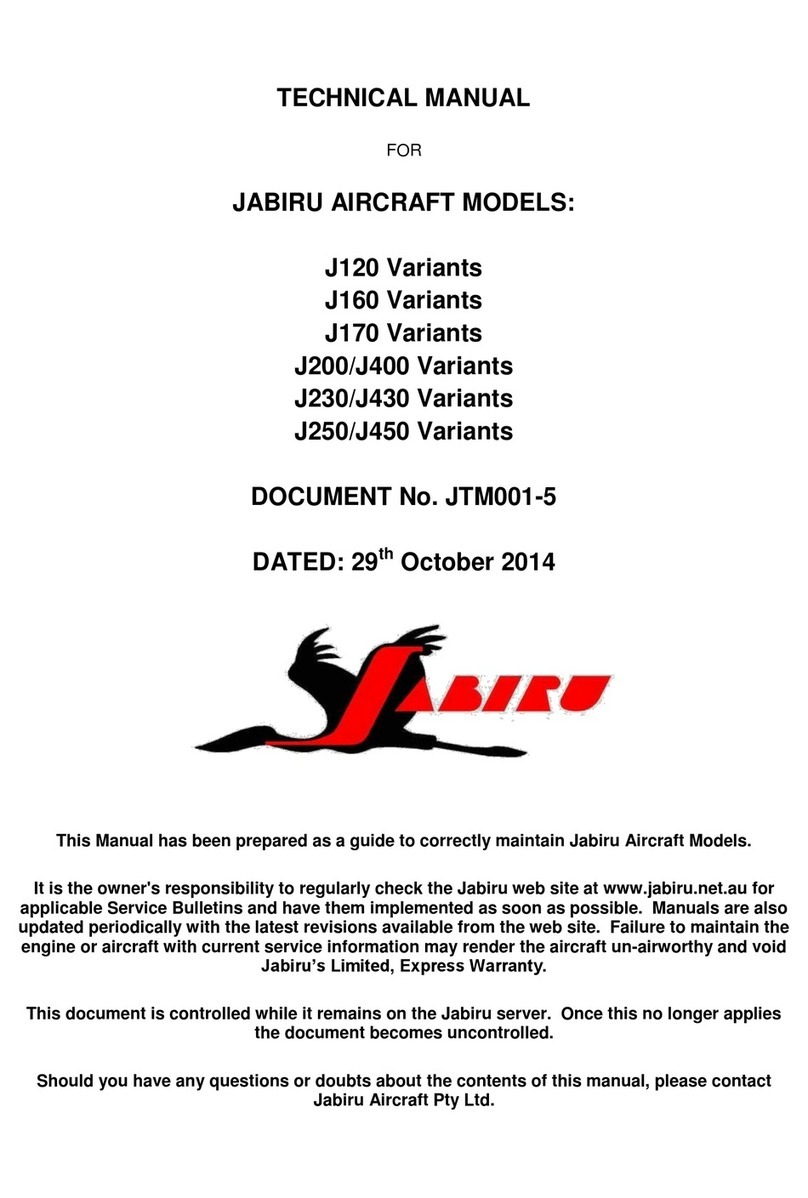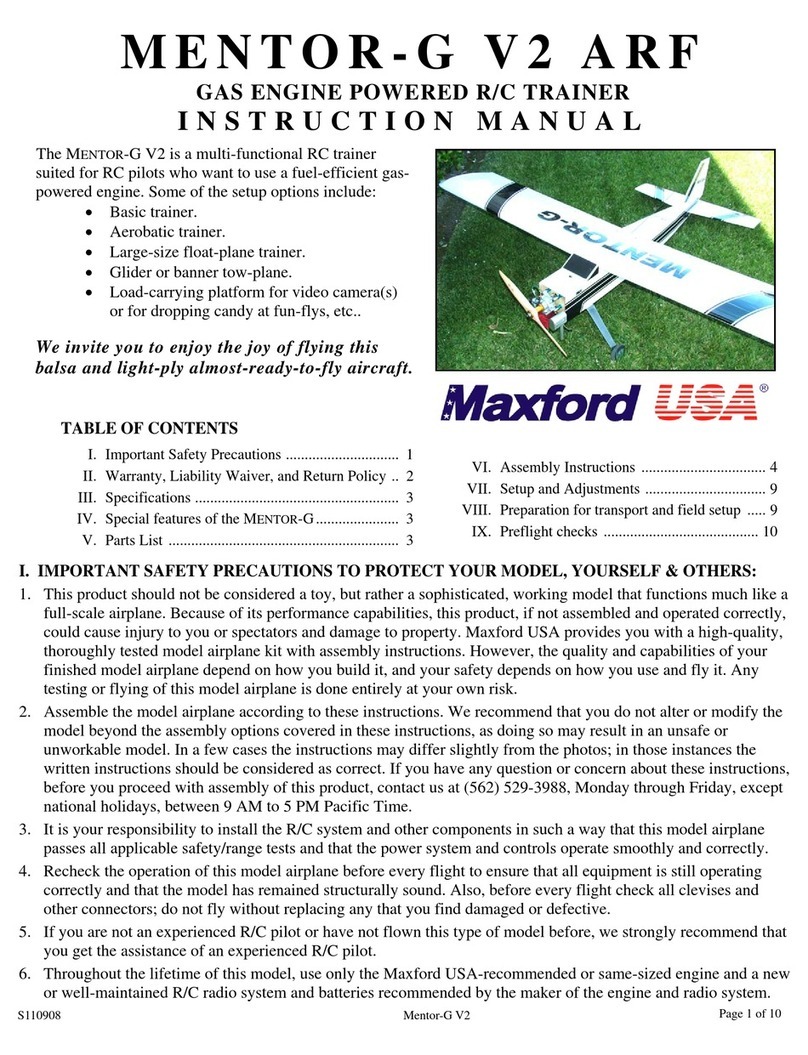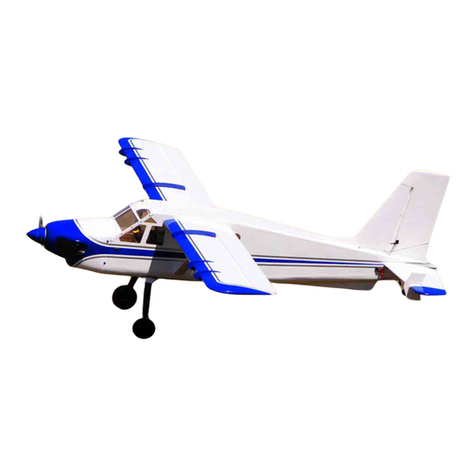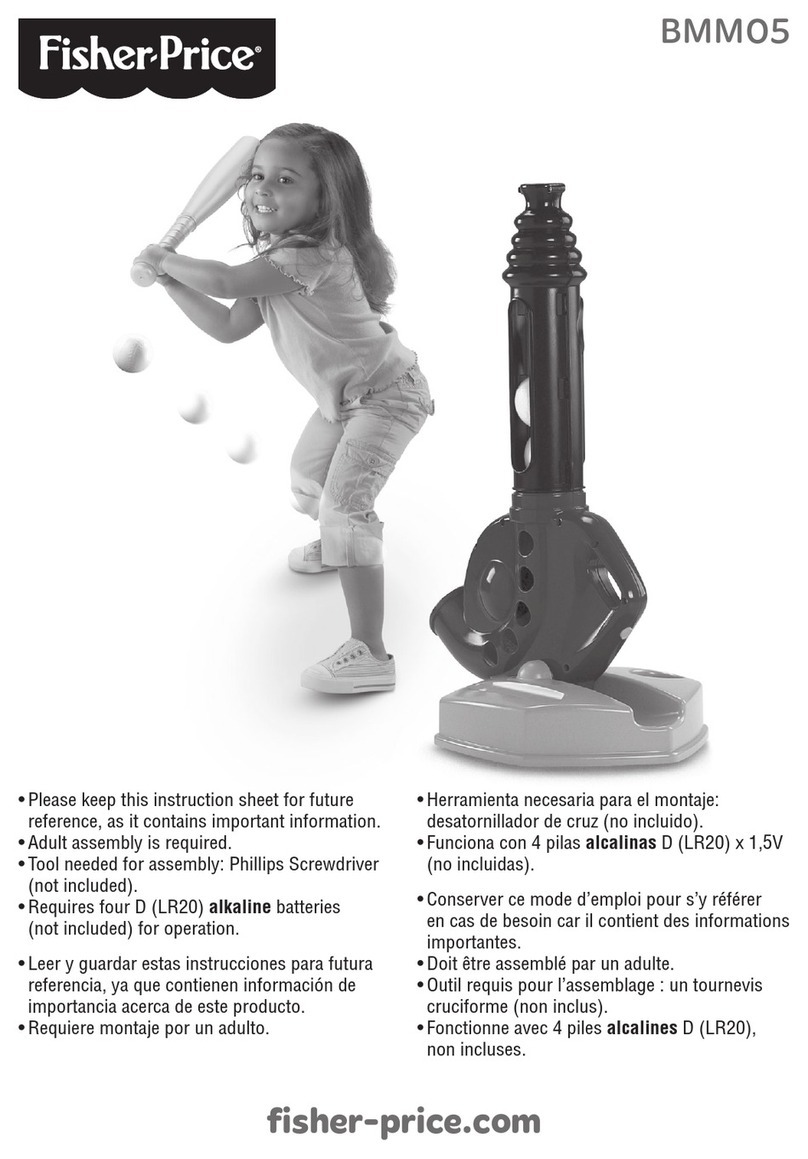3
airframe. For reference, we performed all of our flight-testing with
our Waco models using .90, 1.00, and 1.20 4-stroke engines. The
.90 flies the airplane beautifully, as does the 1.00 engine. The 1.20
is close to over-powering the airplane but works fine with throttle
management. SIG's flying field is grass and all three of these
engines allowed easy take-offs.
This assembly manual depicts the installation of a Saito 1.00
4-stroke engine, mounted in the inverted position. This installation
has been completely tested and has demonstrated excellent
starting and running results along with great idle characteristics.
The Saito 1.00 engine provides the SIG Waco SRE with very good
power margins and excellent reliability. The installation of this
engine in our Waco will also show that the entire manifold and
muffler system can be kept within the confines of the cowl, with no
need for openings. Cooling airflow through the cowl and around
the engine has been completely tested on this design and found to
be excellent.
The only cowl openings required for this particular engine
installation were two small elliptical openings to clear the valve
boxes and a small diameter hole for the needle valve extension.
We really like this installation because it is practical and also
preserves the nice cowl and fuselage lines of the model. Take a
look at the Engine Installation section of this manual for more
complete details.
For reference, the practical maximum usable inside diameter of the
cowl is 7-1/2”. With the cowl fully in place on the fuselage, the
distance from the front face of the firewall to the rear face of the
spinner backplate is 5-7/16”.
Last, we strongly suggest that you take the time to carefully
break-in new engines. A good running, well broken-in engine
almost always minimizes engine related problems at the flying
field.
COVERING MATERIAL:
The SIG Waco SRE ARF model has been professionally covered
with SIG AeroKote®covering film. This high quality polyester film
has been expertly applied, using a scale color scheme, based on
the beautiful NC1252W full-scale Waco SRE.
The SIG Waco SRE ARF kits are built and covered in a part of the
world that is typically humid. When the individual covered parts are
removed from their plastic bags, some wrinkling may occur over a
24 to 48 hour period of time. This is especially possible if you live
in a drier climate. This phenomenon is perfectly normal and DOES
NOT mean that your model has a defect. Such wrinkles are a
result of the wood itself losing moisture and dimensionally
shrinking in the process. This is the nature of wood, especially
softer types, such as balsawood.
Some modelers may feel that the covering on the ARF model
should be perfect and that they should not be expected to re-shrink
wrinkles. This is not realistic, because any covering material -
regardless of brand - that has been hand applied over wood, is
indeed subject to the possibility of wrinkling.
The requirement is to therefore re-shrink the covering as needed.
This is not difficult to do and can be done using normal hobby-type
covering tools, such as a heat iron, a trim seal tool and a hobby-
type heat gun. Carefully note that we do not recommend the use
of a heat gun around any areas where two pieces of covering
material have been seamed together. This is because a heat gun
generates a great deal of broadcast type heat that in turn can
loosen seams, often causing the seams to "creep". If you must use
a heat gun around or near such seams, we suggest that you
protect them first. To do this, soak a few paper towels in cool tap
water and arrange the wet towels directly onto and over the
seamed area. You can then use your heat gun to carefully shrink
these areas.
When using a hobby-type heat iron, we always suggest that the
surface of the shoe be covered with a soft cloth. This helps
prevent scratching or hazing the surface of the covering material.
For years we have used old cotton T-shirt cloth for this purpose and
it has worked quite well for us. There are also commercially avail-
able "covering socks" that fit onto most covering iron shoes.
However, these can vary in quality, so choose one that feels the
softest. Also note that the temperatures required to shrink and
seal AeroKote®(275O- 325OF) are definitely high enough to melt
and/or distort some plastic parts. Exercise common sense when
working with high heat sources around the plastic parts on your
model!
For reference, the SIG Waco SRE ARF model was covered using
the following AeroKote®colors and part numbers:
Cub Yellow Opaque SIGSTL331
Black Opaque SIGSTL201
COMPLETE KIT PARTS LIST:
The following is a complete list of all parts contained in this kit.
Before beginning assembly, we suggest that you take the time to
inventory the parts in your kit, using the provided check-off boxes
(❑). Note that the CA type hinges for the ailerons, rudder, and
elevators are in place in each of these parts but are not yet glued
in place. Also note that the nuts and bolts required to mount your
engine to the motor mounts are not included in this kit and must be
purchased separately.
Important Note: Each Waco SRE ARF kit has been inspected
and inventoried on three separate occasions before leaving the
factory. Therefore, be assured that your kit has been checked
and was shipped with all of the listed parts included. Missing
part claims made after the assembly of the model begins
cannot be honored. Also, please be aware that the various
parts listed below may sometimes be packaged in a different
order than shown. Just be sure to check each parts bag to
make sure that you have received these parts.





















